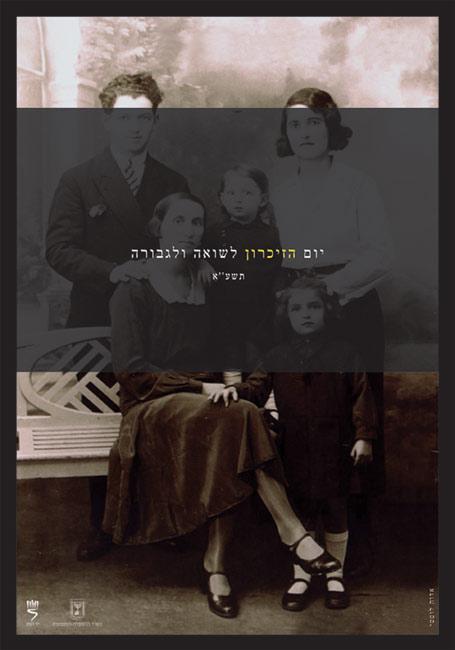The poster presents us with a hidden photograph, in which the concealment is the prominent message - it is the viewer's job to uncover the photo behind the black screen. But first, we need to explore the purpose of the screen.
It appears, that most obviously, the screen represents the actual physical murder of the majority of the people in the photo. An entire world was erased in the Shoah, and there are not many details left behind from which they can be remembered. At the time of WW2, six million European Jews were murdered by the Nazis.
To compound the tragedy, their erasure from the face of the earth created a divide between us and them and resulted in us knowing only very little about them. We are inclined to learn about the Shoah itself, about the murder. We remember the victims as bodies and throngs of suffering people, without a persona and not like regular people who had lived in a rich and vibrant Jewish world. The black screen, in that case, represents not only the murder but also our distance from the world of these people and the extent to which our knowledge about them and their lives is vague (from a cultural perspective, daily life, ideologies,) – a distance that was created by their murder and as well as by a dulling and dimming of memory that comes with the passage of time.
The body of the poster is framed in black. This is reminiscent of a death notice the purpose of which is notify us about the dead. However a back stain covers the face of the Jewish family that appears here, and prevents us from seeing them clearly, to know who they were. And so, we don't really know who and why we are mourning. We have, in that case, a memorial task – to reveal the facial features of the murdered.
It is therefore our responsibility, through great effort in this activity, to remove the concealment and expose the world that was destroyed.
And behold, behind the blurred blackness we discover a modern Jewish family, maybe a little different to the one we imagined. From the picture they don’t seem so distant or different, rather fairly close and similar. People like us - parents, children, family. These simple and common factors reveal the person to us, in spite of the void that time and place has created.
The picture is of the Yaffe family that lived in Paris before the war. The father, Hirsch Yaffe, dealt in the sale of leather bags. He married his wife, Gittel Rabinowitz, at the end of the 1920s. Their children are also in the photo – Rachel Rosa, and Avremele, and also an aunt. As far as we know, both Hirsch and Gittel had visited Israel in the 1920s. There is a photo of Hirsch working as a builder in Tel Aviv.
That is basically all we know about the family. However, given that we are people and families like them we can imagine what kinds of hopes and dreams they had. What the spouses would wish for themselves. How they saw their future. What kind of future they wanted for their children.
The Jewish world in Europe was very diverse, and very close to ours in many ways. The Yaffe family, shown in the poster, gives us a window through which to know this particular Jewish world, and to allow us a more solid foundation for the mourning that Yom HaShoah asks of us. A motif that is conveyed through the mourning notice of the poster.







